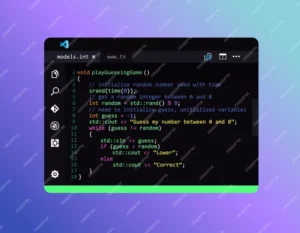Creating Interactive Forms in ReactJS: A Step-by-Step Tutorial

Forms play a crucial role in web applications, allowing users to interact with and submit data. In ReactJS, creating interactive forms can seem complex at first, but with the right approach and understanding, you can build user-friendly forms efficiently. This step-by-step tutorial will guide you through the process of creating interactive forms in React.
Contents
- Step 1: Setting Up Your React Project
- Step 2: Creating a Form Component
- Step 3: Building the Form Structure
- Step 4: State Management
- Step 5: Handling Input Changes
- Step 6: Controlled Components
- Step 7: Form Submission
- Step 8: Form Validation
- Step 9: Conditional Rendering
- Step 10: Integrating External Libraries
- Step 11: Styling Your Form
- Step 12: Testing Your Form
- Step 13: Additional Features
- Step 14: Form Security
- Step 15: Accessibility
Step 1: Setting Up Your React Project
Before diving into form creation, ensure you have a React project set up. You can use Create React App to kickstart your project or work within an existing React application.
Step 2: Creating a Form Component
Begin by creating a new component that will represent your form. You can name it, for instance, “MyForm.js.”
Step 3: Building the Form Structure
In your form component, structure your form using HTML’s <form> element. Within the form, add various input elements, such as text fields, checkboxes, radio buttons, and text areas.
Step 4: State Management
To make your form interactive, you need to manage its state. Create a state object in your component to store the form data, and initialize it in the constructor or using the useState hook.
Step 5: Handling Input Changes
Implement event handlers to respond to changes in form inputs. Use the onChange event to capture the user’s input and update the component’s state accordingly.
Step 6: Controlled Components
In React, it’s best to use controlled components, where the component state drives the form inputs. Ensure that your input elements have value attributes bound to the corresponding state properties.
Step 7: Form Submission
Create a function to handle form submission. The onSubmit event should prevent the default form submission and allow you to process the data using the current state.
Step 8: Form Validation
Implement client-side validation to ensure data integrity. Check whether the input data meets your specified criteria and provide user-friendly error messages.
Step 9: Conditional Rendering
Depending on your form’s requirements, you may need to implement conditional rendering of certain elements. For instance, you might show or hide specific input fields based on user selections.
Step 10: Integrating External Libraries
React has a rich ecosystem of libraries that can simplify form handling. Consider using libraries like Formik or react-hook-form to streamline your form development process.
Step 11: Styling Your Form
Apply CSS styles to your form components to enhance the user interface. You can use plain CSS, a CSS preprocessor like SASS, or CSS-in-JS libraries like styled-components.
Step 12: Testing Your Form
Thoroughly test your interactive form by entering different data, trying various interactions, and checking how the form behaves under different scenarios.
Step 13: Additional Features
Depending on your project’s needs, you can add more features to your form, such as file uploads, date pickers, autocomplete, and integration with third-party libraries.
Step 14: Form Security
Pay attention to form security. Implement measures like input sanitization and protection against cross-site scripting (XSS) attacks.
Step 15: Accessibility
Ensure your form is accessible to all users, including those with disabilities. Use semantic HTML elements and provide appropriate labels and ARIA attributes.
Conclusion:
Creating interactive forms in ReactJS can be a rewarding experience. By following this step-by-step tutorial and continuing to explore React’s capabilities, you can build user-friendly and functional forms that seamlessly integrate into your web applications. The flexibility and reactivity of React make it a powerful tool for handling complex and dynamic forms with ease.









